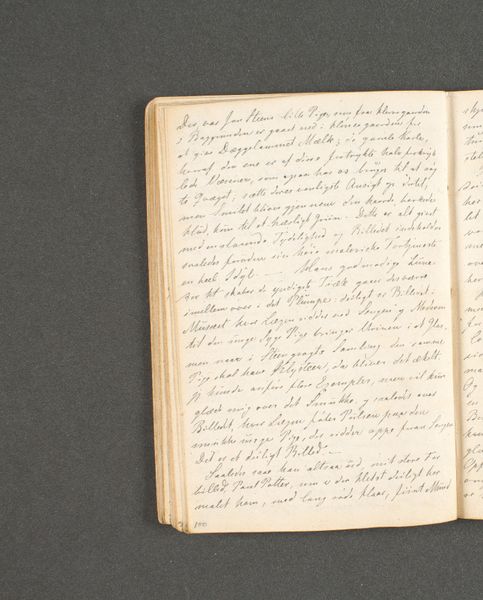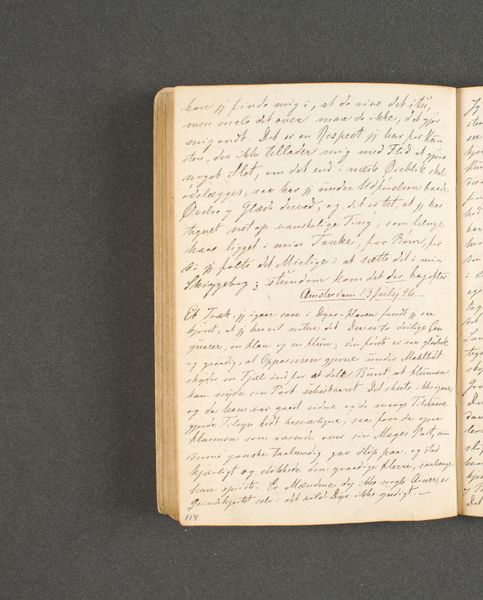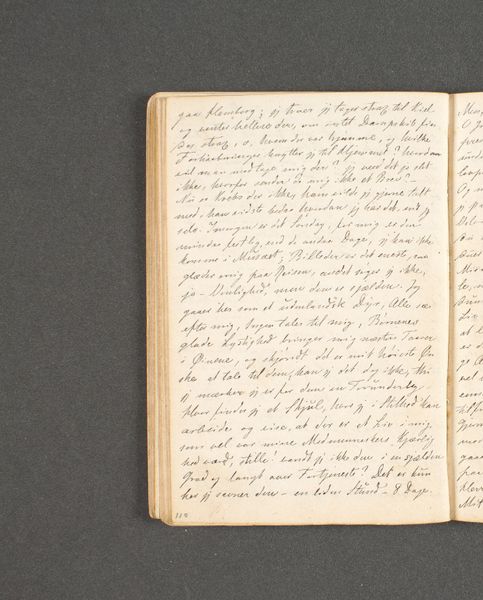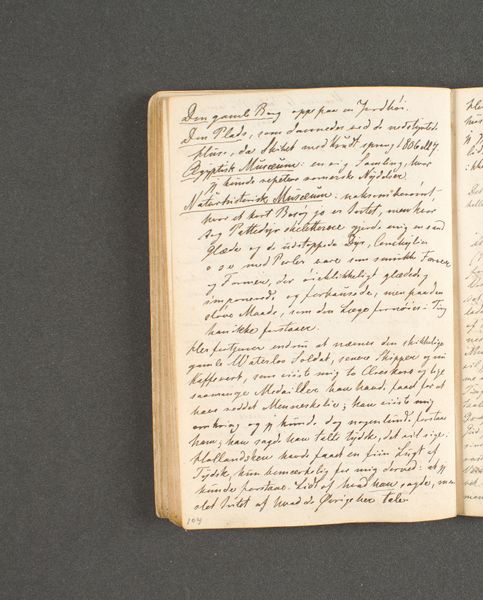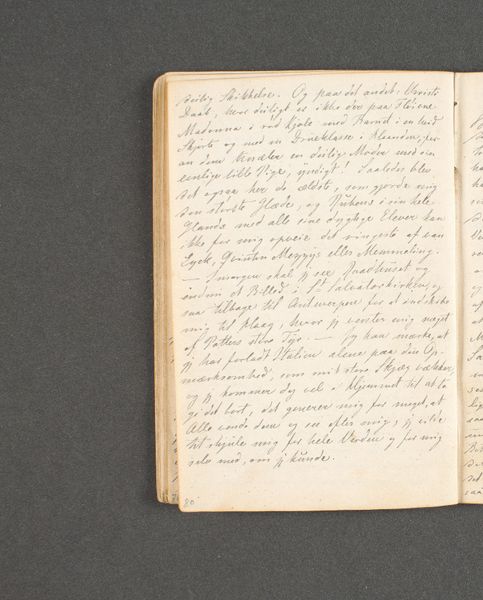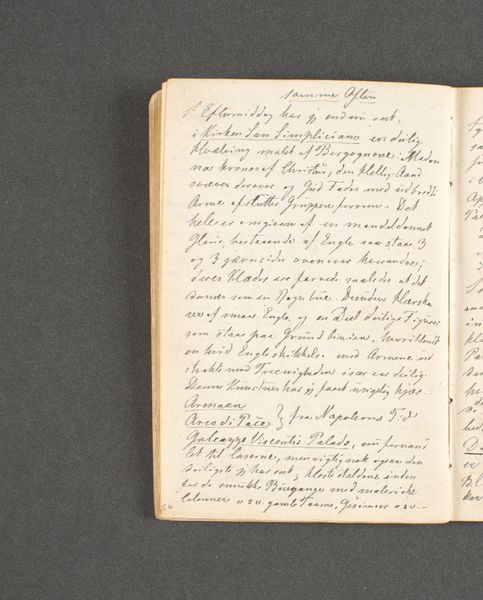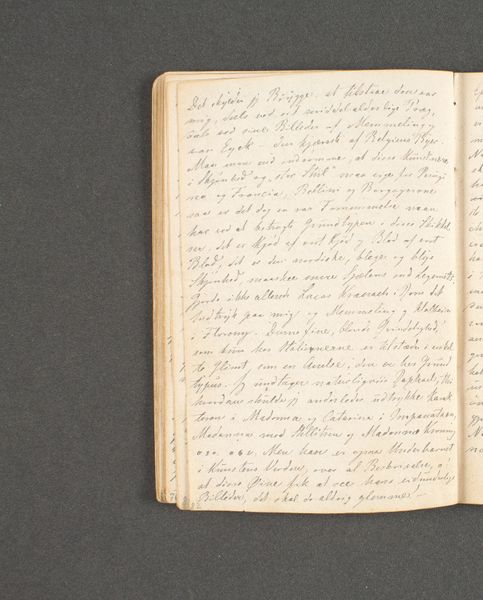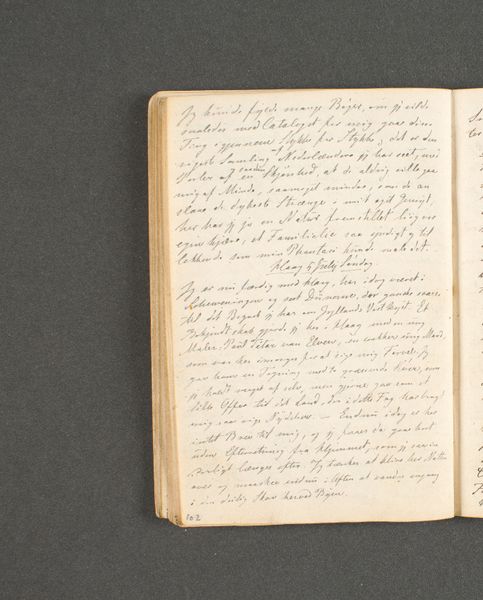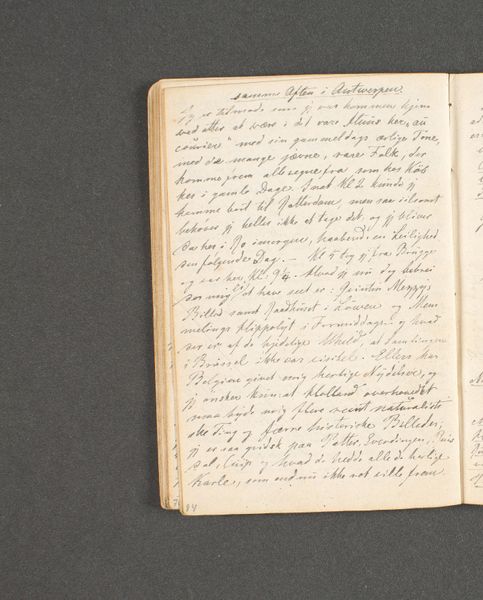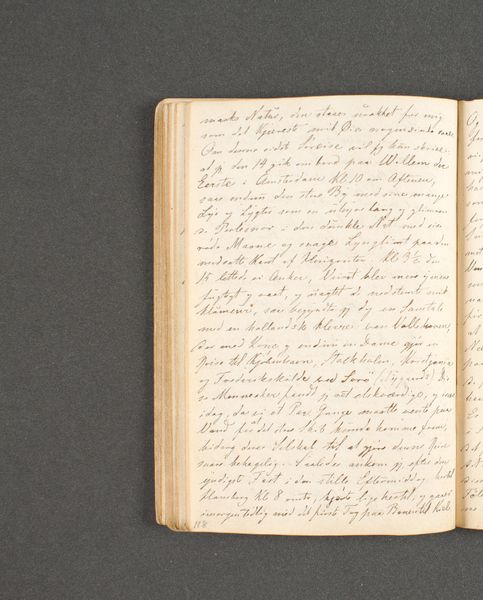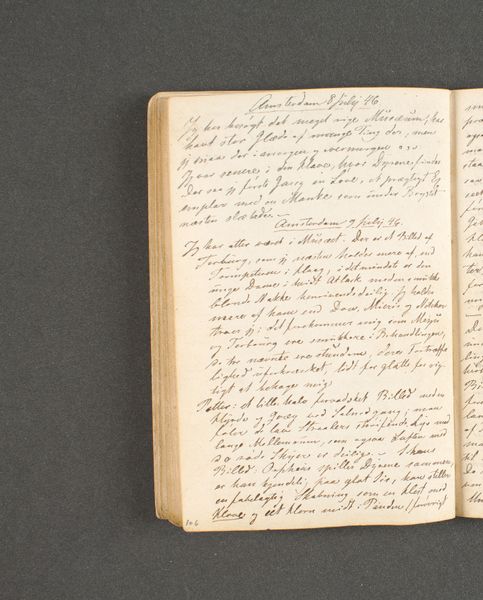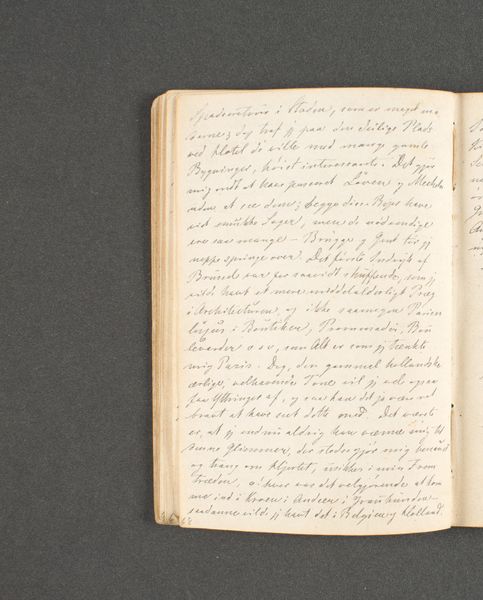
drawing, paper
#
drawing
#
paper
Dimensions: 131 mm (height) x 89 mm (width) (bladmaal)
Curator: So, this is Johan Thomas Lundbye’s “Rejsedagbog. Amsterdam” from 1846. It’s a drawing on paper, currently held at the SMK in Copenhagen. What are your initial thoughts? Editor: It looks like a page from a personal journal, filled with handwritten notes. There's something very intimate about seeing someone’s handwriting from so long ago. What do you see in this piece, beyond it being a simple diary entry? Curator: For me, it is more than just simple observations. Consider the date: 1846. Lundbye is traveling, recording his experiences in Amsterdam. But whose Amsterdam is he seeing, and whose stories are being centred? I see a record of privilege, a glimpse into the world of a Danish Golden Age painter moving through a colonial world, likely with assumptions and biases shaped by his position. Editor: So you're suggesting that even something as seemingly personal as a travel journal can reflect broader power dynamics? Curator: Precisely! Whose voices are missing from this journal? What perspectives are left out? As an activist, I see this page as an entry point to question the narratives we inherit, to acknowledge the silences and exclusions within art history. Who was allowed to travel and record their experiences, and whose stories were deemed unworthy of documentation? It prompts us to consider the politics of representation. Editor: That's fascinating! I hadn’t considered that the simple act of documenting a journey could be so loaded. It makes you think about what stories are being told, and by whom. Curator: Exactly. Art isn’t created in a vacuum. It’s a product of its time and place, reflecting and reinforcing the values of those in power. Examining those power dynamics is crucial to understanding the art itself. Editor: Thanks, I'll definitely look at other journal artworks differently from now on.
Comments
No comments
Be the first to comment and join the conversation on the ultimate creative platform.
